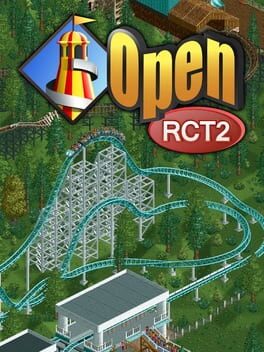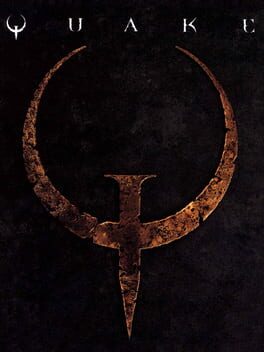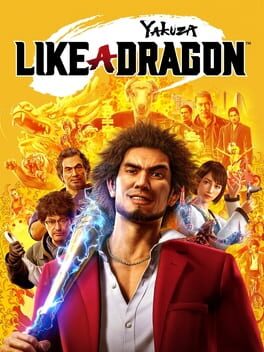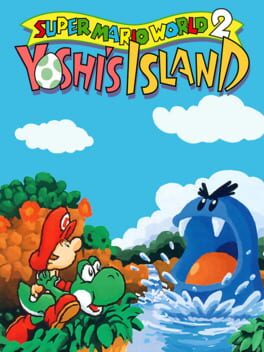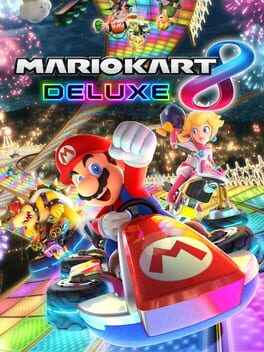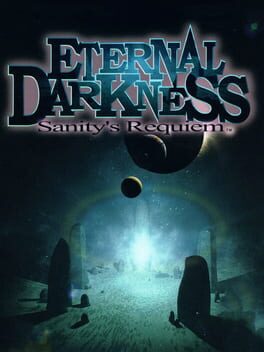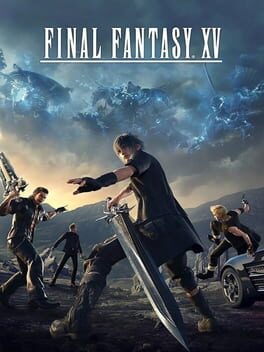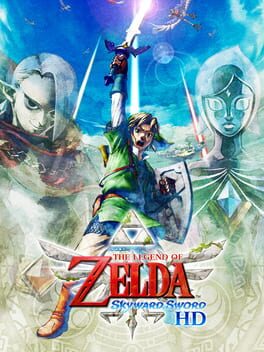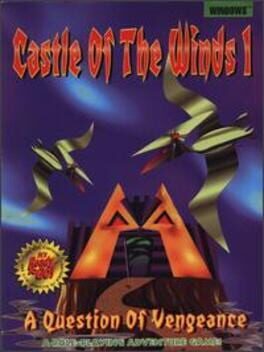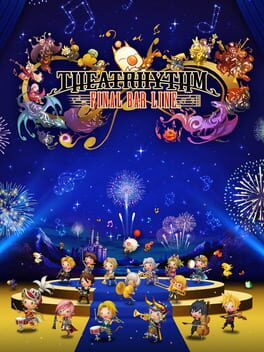StewpendousMan
2014
Aesthetically speaking, a roller coaster is a pretty stark thing. Disney, for all its terrifying power, needs an entire platoon of chain-smoking Imagineers and millions of dollars to make you forget that you’re only looking at 1) a bunch of supports and 2) the thing being supported. The original RCT1 and 2 are unique among sims of the era: Maxis games of the time have similarly endless warrens of detail for the devoted player, but Will Wright’s verve pales in comparison to Chris Sawyer’s knowledge of what elements ought to be spotlighted or relegated to the background. (Sawyer hand-coding RCT in assembly language will remain a top 10 technical achievement in video games for decades to come.) Years of refinement by modders have only made Rollercoaster Tycoon more of what it’s always been: nothing more than a bunch of supports and the thing being supported, more than enough to dominate the skyline.
1996
Astonishing 3D FPS level design, emerging fully-formed from the remains of Doom. Violence is geometry, tracing out arcs and secants, calculating the shortest distance between two Scrags. Combat probably tuned beyond my ken, a rasp against my nervous system. The perfect PING of a grenade as it bounces off a wall directly into an Ogre's asshole.
Come for Yakuza's standard goof-troop shenanigans and crimeboy melodrama, stay for the occasional willingness to meet Ichiban’s gang of miscreants on the level, with a minimum of judgement or sentimentality. I wish there was more of it, because it’s the backbone of some of the best bits of the game: a job system with a penchant for casting your motley crew as service industry workers, crime syndicates built and run by people who had nowhere else to go, a story that raises its stakes as it knocks more and more characters to the margins of society. Though the last third gets bogged down in fanservice and choppy pacing, the finale remembers what made the rest of the game tick – Ichiban’s weeping when he realizes he can’t help but see the villainous mastermind as his equal is a magic trick that rarely gets pulled off this well.
It’s not perfect and the combat system especially needs some polish, but look, man, I’ve been laid off twice in the last four years. We live on a melting iceberg, it’ll come for you too. In the meantime, give me more of this.
It’s not perfect and the combat system especially needs some polish, but look, man, I’ve been laid off twice in the last four years. We live on a melting iceberg, it’ll come for you too. In the meantime, give me more of this.
1994
FF9 has the trappings of theatricality, but FF6 has the soul of a booze-soaked veteran actor on his third marriage: a great sense of precisely how long to milk a moment, comic timing that the series hasn't been able to replicate since, and a villain whose lines are pure Dangerfield and whose battle sprites are pure Fosse.
2017
I play this in a league at a local bar, and I was talking with a woman on another team about the kind of crowd that shows up for a Mario Kart bar league, and she said “Look, we're all here because we have a little bit of the ‘tism, right?” and that turn of phrase will live rent-free in my head every day for the rest of my life.
One of the few veins of horror that has yet to be strip-mined to feed the YouTube indie horror machine, due almost entirely to its narrative structure and ambition: a millennia-spanning story told in a dozen segments, each featuring its own protagonist. To this base, add Resident Evil-ish third-person action and light puzzles, melee and ranged combat, a magic system, enough B-movie violence to get an M rating, and the headliner: a “sanity system” where your character’s mental faculties were reflected by in-game, fourth-wall-breaking hallucinations.
At first glance, this sounds like something a JRPG developer with a coke habit would describe as “a little too much.” That the combined forces of Silicon Knights and Nintendo would make a solid game out of all of this is bonkers. (Much like Monolith Soft’s Xenoblade Chronicles, Nintendo-dispatched designers were responsible for significant improvements on the initial efforts.)
So what keeps this shambling beast together for 12 hours? Most of the game’s biggest strengths flow from the sheer bravado and execution of the narrative concept. The chapters take place across four different locations, and seeing all of the ways these places change over the centuries keeps things very grounded – you’ll traverse a certain room in a Gothic cathedral in one segment and will immediately recognize it when you return to the same room in a segment set in the same cathedral several centuries later. There’s an alchemy here that other epoch-spanning stories can’t quite pull off; an oddly quotidian take on time travel. And a steady drip of horror-movie schlock, purposely overwrought Lovecraftian prose, and small doses of wry humor prevent the whole thing from getting too heavy.
Another strength is the multiple protagonists. Most of them only take the stage for a single segment, so by necessity, characterization sprawls outside of writing choices. Each controllable character has different stats based on their background – a psychologist has a firm grip on sanity compared to a journalist covering the first World War scant miles from the horrors of the trenches. Even animations contain plenty of personality: an Indiana Jones-esque archaeologist finishes off zombies with a stylish toss of his blade, while an out-of-his-depth Franciscan monk needs three clumsy blows to crush an undead spine. Each character feels different enough that there’s a basic sense of propulsion from this alone.
That said, other aspects of the game tend toward mediocrity. The combat system is serviceable but never really pushed in any interesting directions, and for all the Resident Evil inspiration, one or two more instances where players are asked to operate with limited resources would have gone a long way toward spicing things up. The pacing, while generally solid, isn’t flawless: while the final chapters wisely tend towards big guns and hordes of undead to ventilate, some mid- and late-game setpieces focused around investigation and exploration bring the proceedings to a screeching halt.
This is my personal Platonic ideal of a game to replay every year or two. It’s not too long, it does a few things extremely well, and the rest is mid enough to carry its own weight. It’s a shame that we won’t see another horror game like this for a long time, if ever: Nintendo has long abandoned their M-rated game strategy, Dennis Dyack badly mishandled multiple Kickstarters for a spiritual successor, and the horror genre itself has moved far away from big budgets, Lovecraft, and Resident Evil. These aren't necessarily bad things - I'm not trying to go Old-Man-Yells-At-Cloud about this game. But someone else is going to figure out how to make a narrative this wild work in a video game again, and I'm excited as hell to see what that looks like. Until then, all I can do is hope that somewhere, the old gods yet stir in restless sleep, dreaming of a long-forgotten past when their names were still to be feared.
At first glance, this sounds like something a JRPG developer with a coke habit would describe as “a little too much.” That the combined forces of Silicon Knights and Nintendo would make a solid game out of all of this is bonkers. (Much like Monolith Soft’s Xenoblade Chronicles, Nintendo-dispatched designers were responsible for significant improvements on the initial efforts.)
So what keeps this shambling beast together for 12 hours? Most of the game’s biggest strengths flow from the sheer bravado and execution of the narrative concept. The chapters take place across four different locations, and seeing all of the ways these places change over the centuries keeps things very grounded – you’ll traverse a certain room in a Gothic cathedral in one segment and will immediately recognize it when you return to the same room in a segment set in the same cathedral several centuries later. There’s an alchemy here that other epoch-spanning stories can’t quite pull off; an oddly quotidian take on time travel. And a steady drip of horror-movie schlock, purposely overwrought Lovecraftian prose, and small doses of wry humor prevent the whole thing from getting too heavy.
Another strength is the multiple protagonists. Most of them only take the stage for a single segment, so by necessity, characterization sprawls outside of writing choices. Each controllable character has different stats based on their background – a psychologist has a firm grip on sanity compared to a journalist covering the first World War scant miles from the horrors of the trenches. Even animations contain plenty of personality: an Indiana Jones-esque archaeologist finishes off zombies with a stylish toss of his blade, while an out-of-his-depth Franciscan monk needs three clumsy blows to crush an undead spine. Each character feels different enough that there’s a basic sense of propulsion from this alone.
That said, other aspects of the game tend toward mediocrity. The combat system is serviceable but never really pushed in any interesting directions, and for all the Resident Evil inspiration, one or two more instances where players are asked to operate with limited resources would have gone a long way toward spicing things up. The pacing, while generally solid, isn’t flawless: while the final chapters wisely tend towards big guns and hordes of undead to ventilate, some mid- and late-game setpieces focused around investigation and exploration bring the proceedings to a screeching halt.
This is my personal Platonic ideal of a game to replay every year or two. It’s not too long, it does a few things extremely well, and the rest is mid enough to carry its own weight. It’s a shame that we won’t see another horror game like this for a long time, if ever: Nintendo has long abandoned their M-rated game strategy, Dennis Dyack badly mishandled multiple Kickstarters for a spiritual successor, and the horror genre itself has moved far away from big budgets, Lovecraft, and Resident Evil. These aren't necessarily bad things - I'm not trying to go Old-Man-Yells-At-Cloud about this game. But someone else is going to figure out how to make a narrative this wild work in a video game again, and I'm excited as hell to see what that looks like. Until then, all I can do is hope that somewhere, the old gods yet stir in restless sleep, dreaming of a long-forgotten past when their names were still to be feared.
Aesthetically, this game is consistently light on its feet in a way few other games are; the music, visuals, and writing cast a shimmering haze over Koholint Island. Some obscure dungeon bits in the late game are mostly covered up by a pleasantly low degree of difficulty and the surreal delight of getting into fights with Goombas and Kirby. The constant item switching and continuous popups whenever you bump into certain obstacles are a drag, but the highlight here is the plot, which pulls off a JRPG-style beat about the nature of the game’s world with understated grace. As the trouble in paradise looms larger and larger, you might even ask yourself: what kind of girl would be happy with a boy who never spoke?
2013
2019
Better than nostalgia – there’s genuine affection for how the internet used to be before the forces of social media, ad sales, and consolidation ground everything up into pink Nazi slime. And the affection is clear-eyed, gently suggesting that all we ever did was swap one flavor of bullshit for another. On top of all that, the relentless dedication to its aesthetic goes toe-to-toe with any Kingdom Hearts game you could name. A few puzzles slightly miss the mark towards the end, but whether or not you were around for the AOL days, this shouldn’t be missed. The mods have always been useless tyrants, the teens have always been cringe, and the people running the whole thing have always been dipshits. May the zoomers (and everyone else) forgive us.
2016
Out of the wreckage of Versus XIII comes something that, like most Final Fantasy games, at least feels like it’s about something. A summer road trip – complete with a bitchin’ car, campouts under the stars, and earth-shattering events that happen somewhere else – comes to an inevitable end, and none of our four choco-boys are prepared for any of it. You could maybe assemble one (1) Crono from the pieces present here; the only heroic aspect of our player character is that he is The Chosen One, and he must lean on his friends for strength, competence, and good cheer.
It's safe to say that much like actual adolescence, what you do in this game is as important as what you don't do. Like a kid, you slowly expand your driving privileges until your buddies trust you enough to operate a motor vehicle. And the combat, which is kinda enjoyable, also feels like you’re 5 years old and using an unplugged controller while your older brother does the actual work. How do you know whether you’re any good at fighting? A report card tells you so. Events that would get lavish cutscenes in other JRPGs happen offscreen and are only referenced in snatches of overheard conversations. (Mom and Dad have been talking about something behind closed doors a lot lately.) Hell, even romance is barely on the table for any of these lovable dinguses. You’ve got a hyper-competent wife-to-be that your own dad approves of somewhere out there in a Vivienne Westwood gown, but your buddy’s kid sister is definitely coming on to you, and that girl who works at the gas station is pretty hot, so there’s no rush, really.
But you know what they say about good times, don’t you? Responsibility and/or the apocalypse – maybe they’re the same thing – comes for us all, whether or not we’re actually equipped to bear it. (Nothing conveys this quite like the summons, which obliterate your opponents with overwhelmingly bad vibes when they deign to show up.) Thankfully, this isn’t quite a traditional coming-of-age tale: FFXV fully understands that adulthood at the end of the world is a brutal proposition and portrays it as such. Our failson hero is self-centered and just manages to stay this side of likeable, but he’s not unsympathetic: sticking your head up your own ass is at least an understandable coping strategy in a world literally growing darker by the day. Even as you grow ever more conscious that Noctis’ late-riser tendencies and penchant for fishing are burning valuable daylight, you sense that these prisoners of duty, royalty, and divinity got a raw deal. Instead, all anyone can do is stumble on, leaving a string of unintentional destruction in their wake.
And when you finally do get to the ruined future, you immediately understand the impulse to go back to a brighter past. Open worlds with gorgeous sunlit views and at least the pretense of possibility morph into quick, linear trips to places that you’ll never really see. In FFXV’s crumbling world, maturity offers neither security nor comfort: Noctis puts on his royal big boy pants and saves the world, and all he gets is a photo album full of memories and an all-too-brief validation of identity. His final fight is against a grinning goofus in a fedora who says he’s from the past and doesn’t even get a transformation sequence, in case you needed one more metaphor. I’d be a whiny asshole too.
One common criticism of this game is that it’s incomplete. That’s absolutely correct. But what’s on offer here is a very, very different flavor than FFXIII, or even Metal Gear Solid 5. The texture here is, I think, both operatic and baroque (Baroque opera?): strange compressions and dilations of time, pre-existing relationships between characters that get zero exposition, capricious gods and royals granting and retracting their favor, performers leaving the stage and chilling out in their dressing rooms before their next entrance. But everything points in the same direction; the game knows where it is because it knows where it isn’t. FFXV is a series of artfully arranged holes, a jerry-rigged jalopy of a game. It’s not cut out for a fantastic voyage, but if you’re interested in a long, strange trip, it’ll get you all the way to the end of the world.
It's safe to say that much like actual adolescence, what you do in this game is as important as what you don't do. Like a kid, you slowly expand your driving privileges until your buddies trust you enough to operate a motor vehicle. And the combat, which is kinda enjoyable, also feels like you’re 5 years old and using an unplugged controller while your older brother does the actual work. How do you know whether you’re any good at fighting? A report card tells you so. Events that would get lavish cutscenes in other JRPGs happen offscreen and are only referenced in snatches of overheard conversations. (Mom and Dad have been talking about something behind closed doors a lot lately.) Hell, even romance is barely on the table for any of these lovable dinguses. You’ve got a hyper-competent wife-to-be that your own dad approves of somewhere out there in a Vivienne Westwood gown, but your buddy’s kid sister is definitely coming on to you, and that girl who works at the gas station is pretty hot, so there’s no rush, really.
But you know what they say about good times, don’t you? Responsibility and/or the apocalypse – maybe they’re the same thing – comes for us all, whether or not we’re actually equipped to bear it. (Nothing conveys this quite like the summons, which obliterate your opponents with overwhelmingly bad vibes when they deign to show up.) Thankfully, this isn’t quite a traditional coming-of-age tale: FFXV fully understands that adulthood at the end of the world is a brutal proposition and portrays it as such. Our failson hero is self-centered and just manages to stay this side of likeable, but he’s not unsympathetic: sticking your head up your own ass is at least an understandable coping strategy in a world literally growing darker by the day. Even as you grow ever more conscious that Noctis’ late-riser tendencies and penchant for fishing are burning valuable daylight, you sense that these prisoners of duty, royalty, and divinity got a raw deal. Instead, all anyone can do is stumble on, leaving a string of unintentional destruction in their wake.
And when you finally do get to the ruined future, you immediately understand the impulse to go back to a brighter past. Open worlds with gorgeous sunlit views and at least the pretense of possibility morph into quick, linear trips to places that you’ll never really see. In FFXV’s crumbling world, maturity offers neither security nor comfort: Noctis puts on his royal big boy pants and saves the world, and all he gets is a photo album full of memories and an all-too-brief validation of identity. His final fight is against a grinning goofus in a fedora who says he’s from the past and doesn’t even get a transformation sequence, in case you needed one more metaphor. I’d be a whiny asshole too.
One common criticism of this game is that it’s incomplete. That’s absolutely correct. But what’s on offer here is a very, very different flavor than FFXIII, or even Metal Gear Solid 5. The texture here is, I think, both operatic and baroque (Baroque opera?): strange compressions and dilations of time, pre-existing relationships between characters that get zero exposition, capricious gods and royals granting and retracting their favor, performers leaving the stage and chilling out in their dressing rooms before their next entrance. But everything points in the same direction; the game knows where it is because it knows where it isn’t. FFXV is a series of artfully arranged holes, a jerry-rigged jalopy of a game. It’s not cut out for a fantastic voyage, but if you’re interested in a long, strange trip, it’ll get you all the way to the end of the world.
Oddly uneven for a Legend of Zelda game. The desperation to try something, anything new is felt far more keenly in the shield durability, crafting, and quick item access systems than anything related to motion controls. That said, this is absolutely worth playing as a missing link between, say, Wind Waker and Breath of the Wild.
A very early Rougelike with a save feature, which of course changes everything. You’ll quickly settle into a comfortable rhythm navigating the Windows 3.1-ass menus, creeping through dungeons, and teleporting back to town to hock your loot. It will take a few false starts to figure out what you’re doing and which spells you need to have handy, but for me, this is a childhood favorite that I enjoy digging up every so often. If you're into meditative dungeon crawlers, give it a shot.
Brought to you by Epic MegaGames.
Brought to you by Epic MegaGames.

